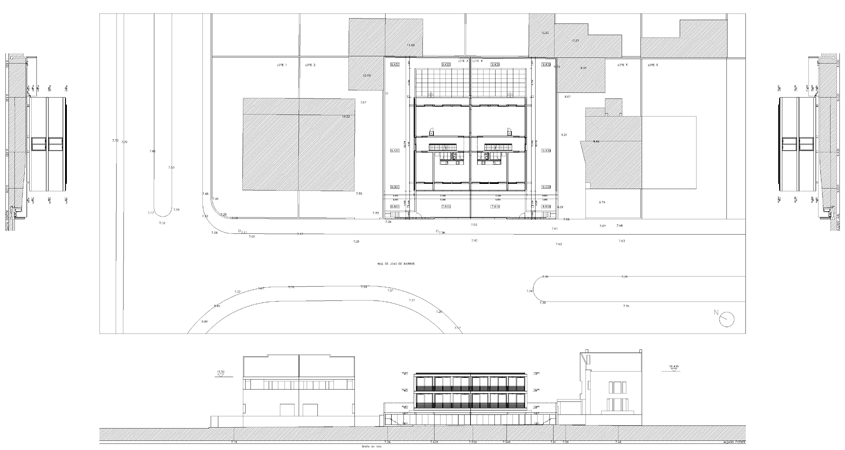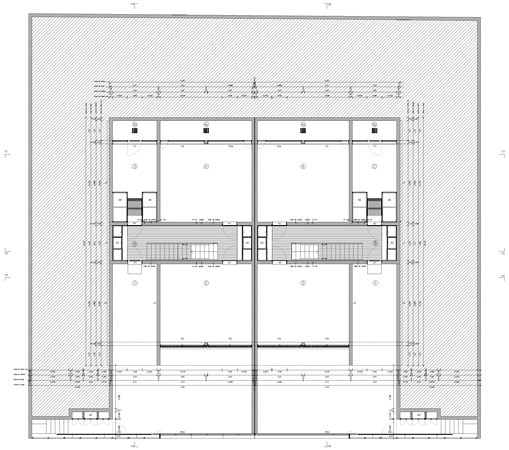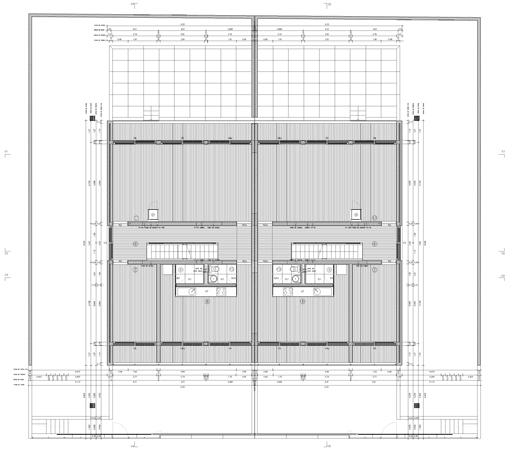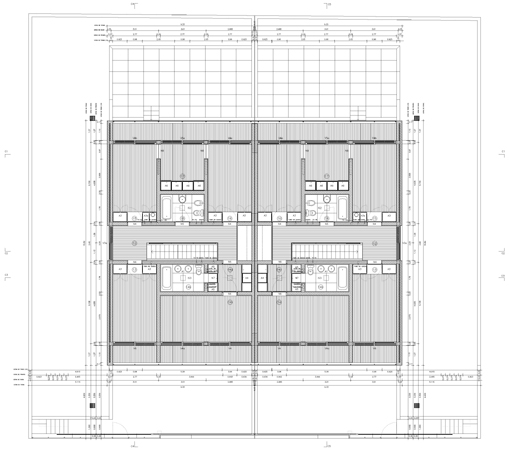Two Houses
Porto
1997 - 2004
The project of these two houses is situated in an urban allotment, recently promoted by the council. The rules imposed (alignments, heights and occupational coefficients) almost predefine de volume to construct.
The implantation is based on the pretext that the volume of construction should be sole, attending to the reduced areas of the lots.
The “place” of the houses is defined through the relationship that is established between the highest level (land) and the lowest level (street), this way distinguishing the different levels in which the interior space is organised and the way it articulates with the adjacent exterior space. Attending to find the equilibrium in the scale and proportion between land and construction.
The geometrical rigour, with which all the elements that compose it are designed, corresponds to the necessity in determining that “place” in the land and also the capacity that they should posses to generate and organise their own space.
The program is distributed between the three floors, in accordance with the composition sense that organises the volume: the more compact expression of the inferior level (basement) corresponds to the entrance, the garage and services; the bigger “lightness” that characterises the two top floors, corresponds to the home itself, distributing between the two floors, where the kitchen and lounge rooms are located on the first floor and the bedrooms on top floor.
From the entrance located on the inferior floor at street level, all the interior space is organised – it’s from here that all the vertical and horizontal circulations are established.
Two houses alike, symmetrical, do not necessarily have to repeat each other.
It can be done, but more importantly, in this case, is to do it in one sole body as long as this allows a double interpretation.
After all one unique volume, autonomous, whose composition, by closing itself in, affirms its own unity, without stopping the integrity of that unit as the parts that compose it can be distinguished, but also its own repetition.












